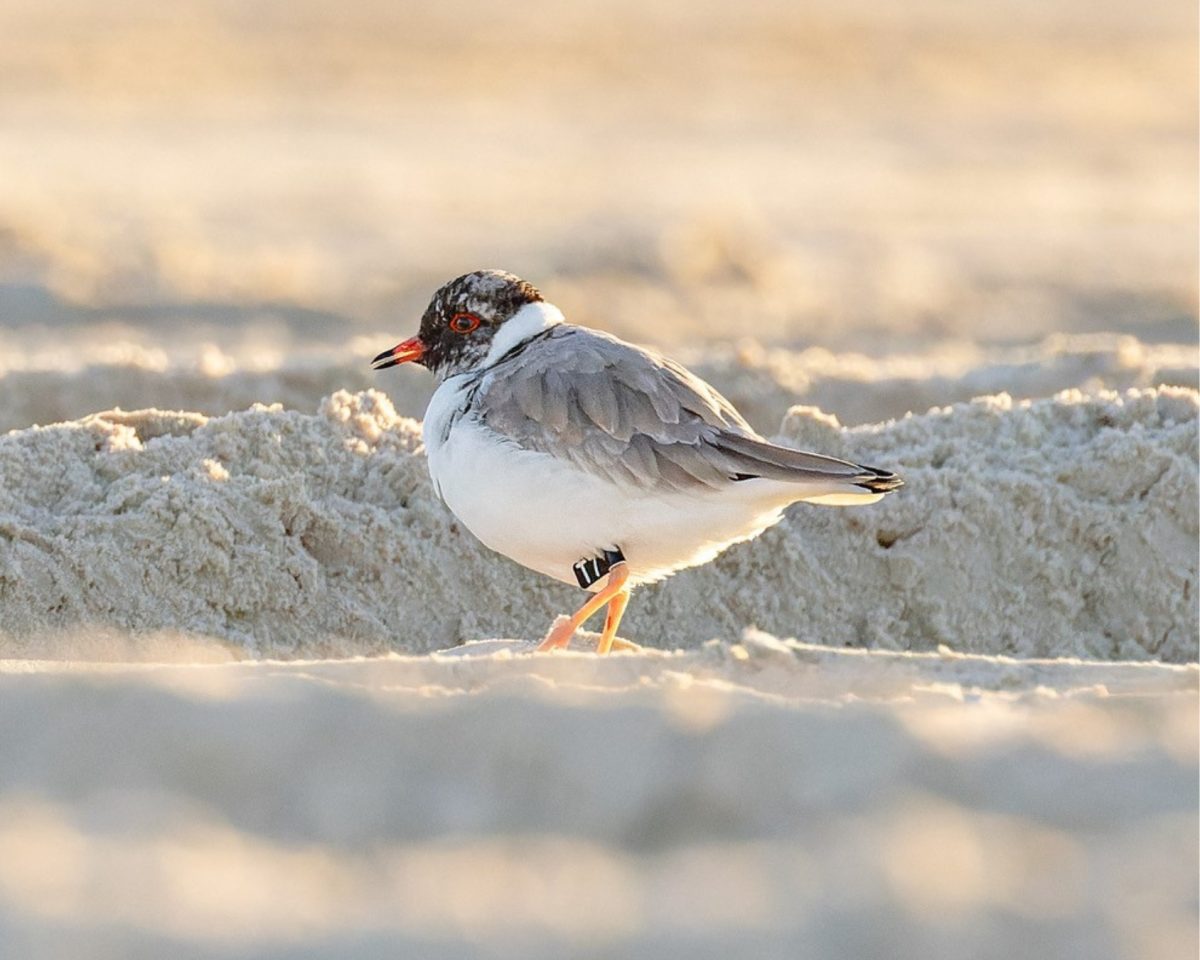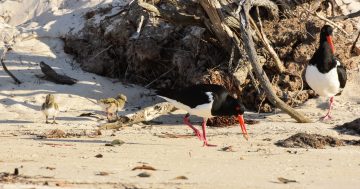
Hoodie T7 has returned to the Eurobodalla following an adventure to the North Coast. Photo: Jacob Crisp NPWS.
A critically endangered hooded plover born in Eurobodalla National Park seven months ago has embarked on a record-breaking 1700-kilometre journey to the New South Wales North Coast and back.
After being spotted in July at Evans Head in the Broadwater National Park, 850 km to the north of Eurobodalla, the young bird has travelled all the way back down to Wallaga Lake, just five kilometres south of where it hatched in January.
A NSW National Parks and Wildlife Service (NPWS) shorebird volunteer sighted and photographed the bird on the sand at Wallaga Lake last week, confirming that it was ”Hoodie T7” by its engraved leg flag.
Shorebird Ranger Kaitlyn O’Brien said she was over the moon when the first call came in from the Australian Bird and Bat Banding Scheme (ABBBS) reporting that Hoodie T7 had been spotted near Evans Head and she was surprised the little bird had travelled so far.
“Until now, the maximum distance a banded hooded plover has been recorded moving is 376 km, and that was after five years, so this little one has certainly started at a cracking pace,” Kaitlyn said.
“We are not sure why Hoodie T7 is so adventurous, as these beach-nesting birds are typically only seen on the South Coast.
“It’s incredible to learn that Hoodie T7 has ventured so far and we are really pleased to see it looking happy and healthy.”
Like its parents, the chick was banded and given an engraved leg flag for identification.
“Banding provides valuable data that gives us a wonderful insight into the secret life of hooded plovers and helps us protect these very special birds,” Kaitlyn said.
“It’s extremely rewarding to know that our work protecting these birds during the nesting season pays off, and that we are contributing to the survival of this species.”
Now that Hoodie T7 has returned home to the Eurobodalla, it’s crucial that beach-goers take steps to keep the little bird, and its relatives, safe.
Hooded plovers are listed as critically endangered in NSW, with a recent census estimating the state’s current population at only 65 birds.
Despite their distinct black, white and red colouring, hoodies are difficult to spot during nesting season, from August to March, and are vulnerable to disturbance.


The best way for people to help hoodies and other beach-nesting birds is to share the shoreline, give them space, leash dogs and walk on wet sand, avoiding the dunes.
The NSW NPWS, with the State Government’s Saving Our Species program, has strategies in place to help secure a future for threatened beach-nesting birds.
Some birds, such as the pied oystercatcher, the hooded plover and the beach stone-curlew, are coastal residents all year, returning to preferred nesting sites to breed over spring and summer. Others, such as the little tern, migrate over thousands of kilometres of ocean each year, returning in spring to nest alongside the local birds.
According to the NPWS, domestic dogs are a major threat along the entire South Coast. While predation of eggs and chicks is recorded occasionally, frequent disturbance by dogs may reduce breeding in adults and the survival of eggs and chicks as parents leave nests to distract potential predators.
Nesting birds can also be disturbed from their nest by unaware beachgoers, exposing eggs to heat, cold and predators.
Chicks will hide and not feed when people are too close. If this disturbance is frequent or long enough, eggs and chicks may die. Inundation by king tides and storm surges can cause severe losses among little terns nesting on low-lying spits and islands.
NPWS works with local councils, the NSW Department of Industry, Crown Lands, the Department of Defence, Parks Australia and volunteers to manage and monitor bird-nesting sites.
For more information on NSW’s beach-nesting birds, visit Share the Shore. Read more about the ABBBS, including how you can report sightings of banded birds.








